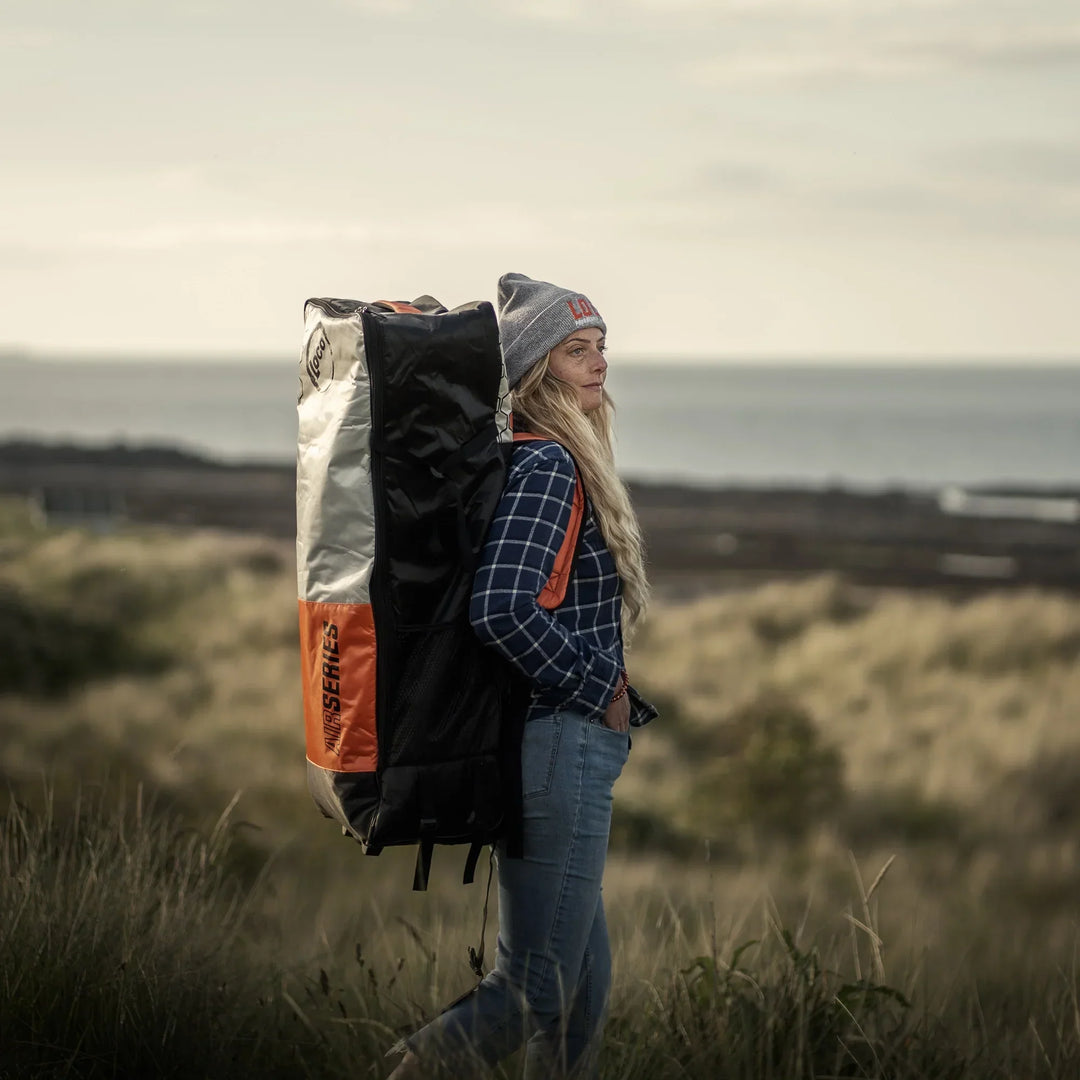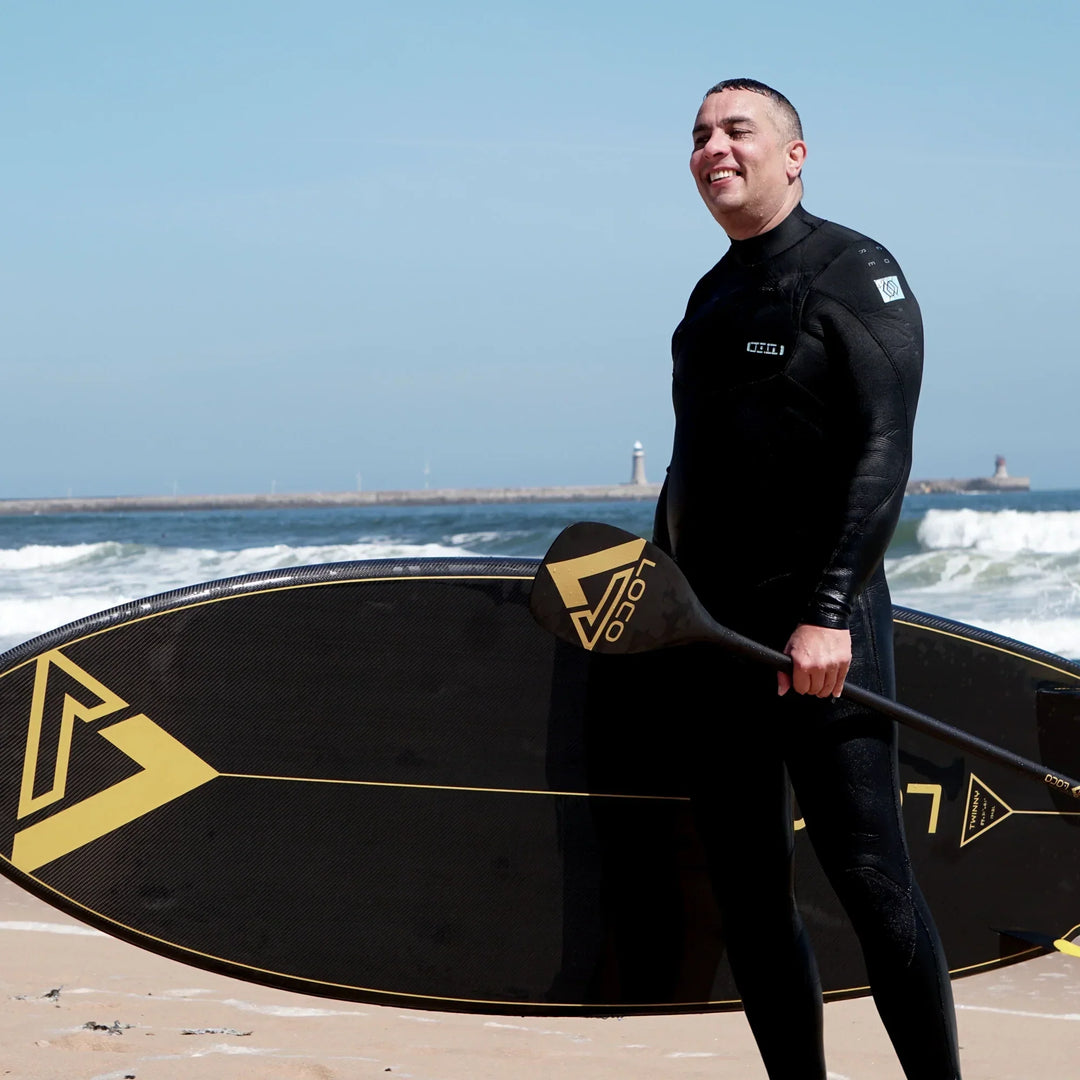Tall, short, fat or thin – choosing Your Perfect (SUP) Mate

Tall, short, fat or thin – choosing Your Perfect (SUP) Mate. In light of the current run of uber low volume/width/length surf SUPs being widely promoted, the question is posed: how small should we actually be going?
After being dumped by the roadside, the renaissance of longboard stand up paddle surfing has also popped back onto the agenda – something many toes on the nose aficionados will be relishing. (After all, prone surfing luminaries recognise both disciplines as two halves of the same puzzle, so why shouldn’t SUP be the same?)
Which size is best for you?
There are many conflicting signals when browsing and confusion is rife. Read on as Tez Plavenieks considers what to look for when searching for that magic shred stick.
Let’s get one thing straight…
Being able to paddle a small, toothpick sized surf SUP correlates directly with your body weight – this is an important point to grasp from the get go. No matter how much you want to, how much your heart desires and how good a paddling technique you have; if you’re on the larger side then it’s just not going to possible. So stop torturing yourself…Tall, short, fat or thin – choosing Your Perfect (SUP) Mate.
Zane, Kai and Connor et al are all small in stature, whereas the majority of everyday paddlers are the wrong side of 80kg and possibly ‘yoof’ is but a distant flicker in the rear view mirror.
Doom and gloom aside, this isn’t to say riders can’t find a stick that gives them perfect balance between performance, stability, glide and manoeuvrability. In fact there are plenty of examples of SUPs that deliver rippability without the need for stabilisers or someone holding you aloft – just check Loco’s catalogue.
Vital Statistics
It’s common to aim for a board, once you’re competent, of the same litreage in volume as your weight in kilograms. Although this alone doesn’t promote stability, it still plays its part. Once you’re into negative volume, it will affect how many dunking’s you take. Tall, short, fat or thin – choosing Your Perfect (SUP) Mate.
Width and length also need to be considered – the former being arguably the more important factor. Length can dictate the amount of glide you experience and how easy it is to paddle into waves and take off. Riding style should also be given some thought as not all boards offer the same.
Once you have in mind the size of board you think you need, a further bout of honest Q&A is called for.
Your ‘hood
As much as we all aspire to ride at the best surf breaks, at optimum times, with perfect offshore winds, tides and solid swell, it just isn’t possible. Unless you happen to live a nomadic life with zero responsibilities, you’ll be mostly confined to your nearest spot, as and when you can get there.
If you’re an inland paddle surfer then you’ll have the added issue of distance. Chuck family, work and general life clutter into the mix and it can sometimes prove nightmarish scoring a session.
All these factors need to be taken into consideration when choosing a new stick. For those with access to waves that are perfect 90% of the time, high performance surf SUPs will be fine. For the rest of us who don’t have the privilege of riding magazine-quality breaks, that extra ‘something’ under our feet, allowing us to cope with variety, is the key to success. Tall, short, fat or thin – choosing Your Perfect (SUP) Mate.
My choice
If you live in area that suffers from slow waves then this should be considered, as should where the wave actually breaks. For instance: I live next to a spot that gets swell but is heavily affected by tide and breaks some distance offshore on a sand bank. This requires a board that can actually get me to the take-off zone in the first place.
I therefore favour boards of around 8ft that have enough glide to comfortably float me out to the surf, ready to ride. Battling against balance issues is a no, no; otherwise I’d be spent before I even got a wave.
My spot is also exposed to the wind and I need something relatively wide (27” – 29”) to cope with wind chop (but not so much that I sacrifice manoeuvrability – all relative to my weight and skill set). This shouldn’t be confused with volume, as excessive thickness gives too high a riding platform, which can also cause balance issues.
An average beach break is my second local wave and features more traditional peelers that unload closer to the beach. Swells are usually on the small side but can be quite steep. I can therefore get away with a slightly smaller board as I don’t have to paddle any distance to get to the peak. Once in position, a narrower, less voluminous and lengthy SUP gives me a nippy and manoeuvrable platform that I can ‘work’ to generate speed. Zipping about on smaller wave faces; my smaller SUP fits into tighter pockets and allows me to perform moves that I couldn’t with larger stand ups.
This is just one example of how choice of board is in direct correlation to the surf zone most encountered. It’ll be different for everyone and each location – you just have to be honest about where you ride most, your skill and aspirations.
Longboard
Over the last few years retro style longboard SUP surfing has been overshadowed as the shortboard revolution took hold. Recently there have been a few designs emerging from a number of brands (Loco being one) with aims of re-opening this forgotten chapter of the sport and giving it a new lease of life.
Let’s face it, not everyone subscribes to the rip ‘n’ tear mentality – some just want to cruise, swoop, glide and arc. If you look at surfers like Joel Tudor and Ben ‘Skindog’ Skinner, they all come from a longboard background and although they can expertly ride every type of stick, they honed their craft on ‘logs’ first.
There shouldn’t be any embarrassment factor with owning a surf SUP greater in length than 9ft – in many cases it’s probably the best option. As stand up paddle surfing progresses I’m confident we’ll see a full renaissance in longboard SUP surfing, just as our prone brethren did in the 90s. And don’t forget, with talent, some riders can bunt about on anything they’re given.
For paddlers looking for longboard/nose riding performance; Loco’s new 10ft X 29” X 145L should fit the bill nicely and give those hotdoggers the chance to draw a few lines the way they want to.
Spice of life
What we see, read about and hear in the media is all driven by the want to promote certain products and trends – which is great; progression is everything and SUP is still evolving. However, we should always keep in mind that as individuals, we may need (rather than want) stand up paddle boarding equipment that suits our personal preferences rather than what the pro guys and gals ride.
Being swayed by colourful ads and funky marketing spiel is a sure fire way to end up on the wrong kit – something that would be detrimental to your enjoyment and the sport as a whole.
When searching for a new spangly wave machine, be honest with yourself about your ability, where you paddle and what you’re realistically going to achieve as you progress, then your SUP surfing life will be peaches & cream.




